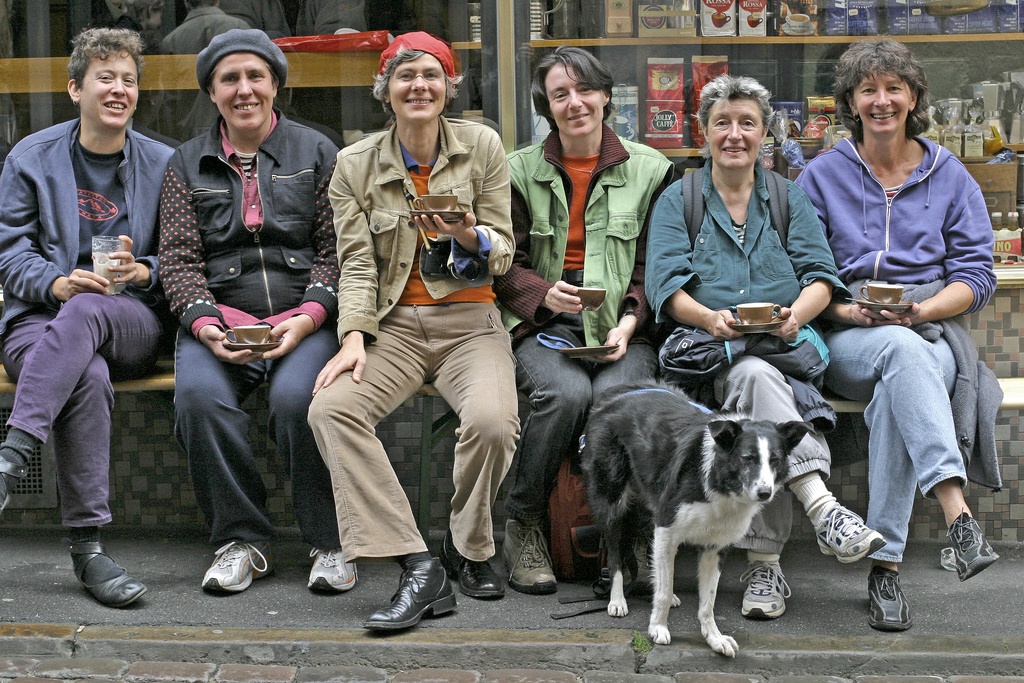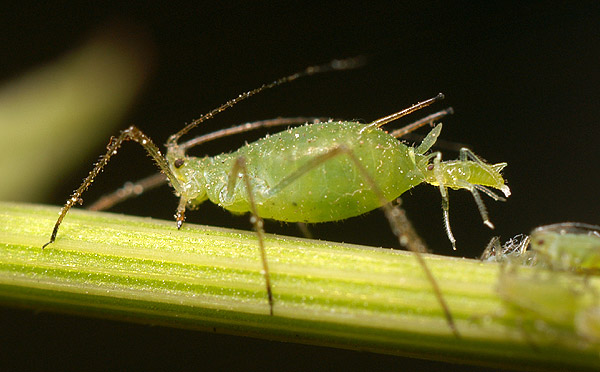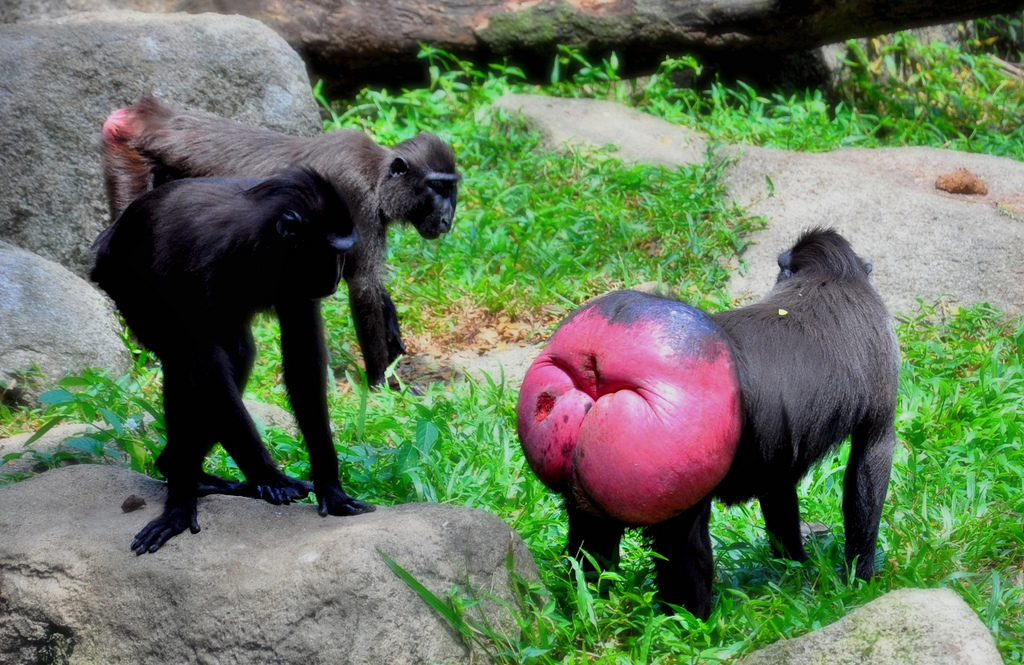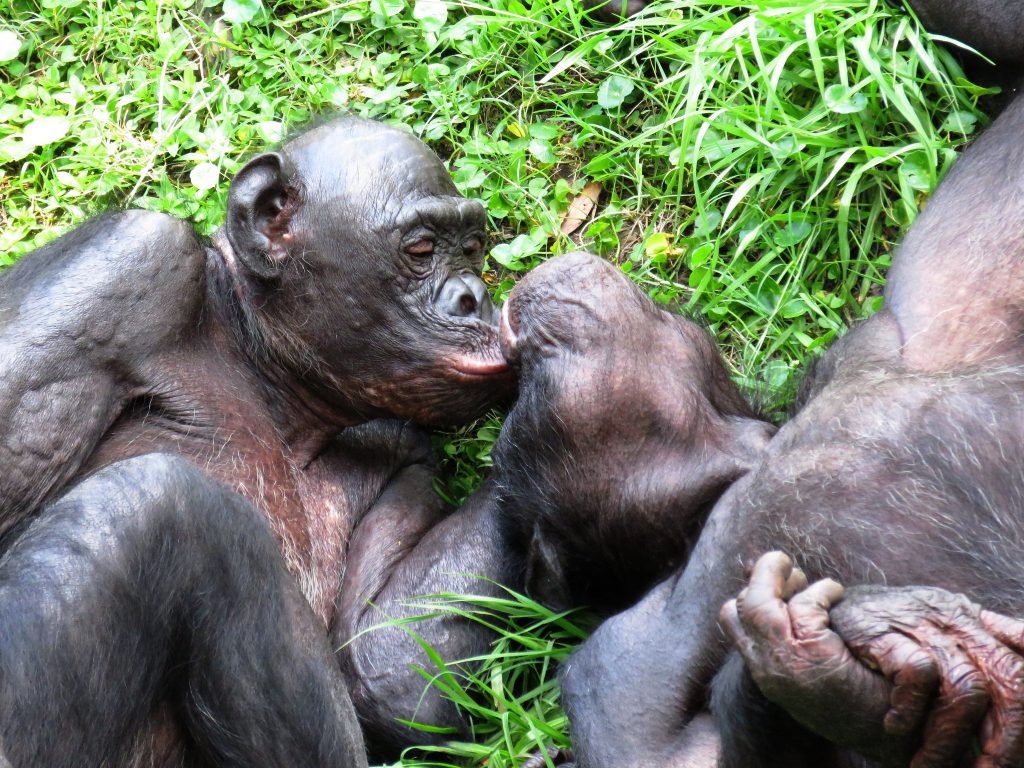Nature’s Most Creative Copulators
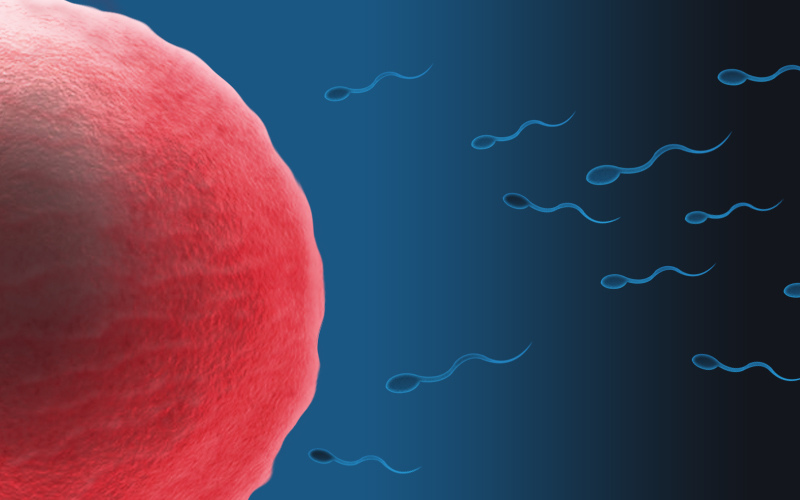
Excerpted from The Creative Spark: How Imagination Made Humans Exceptional. © 2017 Dutton. Reprinted with permission from Dutton.
Googling “sex” in 2016 yields approximately 3.34 billion results in 0.29 seconds. That’s nearly four times as many hits as one gets when Googling “religion,” three times as many as “politics,” and about 50 percent more than “death”—but slightly less than “food.” If representation on the internet tells us anything about what matters to humans, then sex and food are pretty darned important. But we don’t need Google to tell us that. Food and sex are the basic goals of life for most organisms, not just humans.
As far as sex is concerned, animals generally come in two variants: female and male. We call these the “sexes,” and they are the two complementary manifestations of animal biology necessary for reproduction. In most cases, one of each sex is needed to get together and physically exchange gametes (either egg or sperm, which is how we classify biological “female” or “male”) to produce an offspring. To state the obvious, this physical exchange is at the heart of species’ ability to successfully leave descendants. Because sex is so important, sexually reproducing animals have physiological systems that reward them for engaging in it. Sex feels good.
And because it feels good, many mammals take it up a notch—they have sex more often than is necessary to reproduce. We call this “social sex,” and it comes with costs. Those animals that have more social sex also have more sexually transmitted infections (STIs). Increased sexual activity means taking on more risks to health—a choice we might think would soon become extinct given the fundamental evolutionary cost, even if sex does feel good. But in highly social animals (like canids, whales, and primates), more sex is apparently worth the STI risk, and social sex is common. The fact that some groups of animals so gladly take the risks of increased sexual activity leads many researchers to believe that there is more than just pleasure behind social sex. Primates are among the social sex champions of the animal kingdom, so it should come as no surprise that they are also the STI champions of the animal world. It should be even less surprising that humans are the STI champions of the primates. We, as a species, have lots of sex. That means it must be really important. But humans don’t just have more sex; we take it to a whole new level. The author Jared Diamond in his aptly titled book Why Is Sex Fun?: The Evolution of Human Sexuality states it best, “Human sexuality is … bizarrely unusual by the standards of other animal species.”
Humans also have sex in many different ways. For men and women aged 25 to 44, 98 percent have had heterosexual genital-genital sex, 90 percent have had oral sex, 36 to 44 percent have had anal sex, and 6 to 12 percent have had homosexual sex. These numbers make most other species on the planet look like prudes. By age 24, 1 in 3 sexually active people have at least one non-HIV STI, and more than 19 million new STIs occur each year in the United States alone. Bottom line: Humans have more STIs than other organisms because humans have more sex, more kinds of sex, and more contexts for—and issues with—sex than any other animal. We are crazy about it.
Sex is more than just an act, a goal, or a biological pattern; it’s a central part of our lives. We write about sex, we think about sex, we talk about sex, we have prohibitions about sex, and we have laws, ideologies, and assumptions about sex. We watch sex we are not participating in, we pay for sex, and we use sex as a tool, a weapon, and a healing practice. We are so creative with sex that we’ve even developed a distinctively human category to mess with the basic biology of sex: gender.
“Gender” is a catchall term for the roles, assumptions, and expectations humans have for the biological sexes, and it creates a problem when analyzing human sexuality. When humans say “male” or “female,” they are almost always referring to gender as opposed to biological sex—the two are not the same. Any specific human’s gender behavior profile is not simply determined by their biological sex or their patterns of sexual activity. This makes human sexuality (the “who, how, and why” of having sex) especially challenging to understand and explain.
There are important differences between the sexes: Women give birth and lactate, men are usually larger and more muscular, and the levels and patterns of some hormones vary between the sexes. There are also important similarities: Our reproductive organs come from the same embryonic tissues, our bodies are made of the same material and structures, our hormones and brains are the same, and we are the same species. Humans have a unique sex/gender muddle that it is both wonderful and a giant pain.
How Sex Works
The combining of gametes from two parents to produce an offspring, sexual reproduction, evolved hundreds of millions of years ago from asexual organisms that reproduced by splitting in half or by budding off copies of themselves. Sex evolved (most likely) as a response to dealing with changing environments. Reproducing by sex creates new variation by combining genetic data from two parents, providing the offspring with more options.
Imagine a simple organism living in a pond. Let’s say this amoeba-like thing filters water to get food. It might do just fine copying itself as long as the water temperature stays more or less constant, but what if things warm up? The filtering system it uses might not be able to accommodate the new temperatures. But maybe there are lots of similar organisms in the pond and each is a little different from the others in its ability to deal with temperature fluctuation. Blending with another similar but slightly different organism (sexual reproduction) could be a good option, as it can give the resulting offspring more flexibility and thus a higher chance of getting both parents’ DNA into subsequent generations than either had by reproducing asexually. But not all new variants do better. In fact, some do worse. Such is the risk of sex. It is the overall payoff that matters: As long as some offspring do better in comparison with the asexual reproducers, the system (sex) has a chance of catching on. Added variation needs to work out in favor of organisms only on average to keep sexual reproduction in a system. This is a good thing; otherwise we’d all be asexual reproducers and the world would be a lot less interesting.
Sex is a biological way to generate more variation for organisms in order for them to have better chances at meeting the challenges the world throws at them. It is a risky venture. Given that, one would think that most organisms would be conservative about sex, thereby minimizing the chances for problems. For many insects, fish, and reptiles, sexual reproduction is reasonably straightforward. There is a specific time in life when their reproductive biology turns on, and they go for it: Males and females exchange gametes. One, both, or neither sex takes care of the resulting fertilized eggs until the young hatch, and they are on their own. Then the reproduction biology turns off, and the animals go back to their regular, nonsexual lives, or they die.
Mammals (like us) are a bit different. Mammals have internal fertilization and gestation. The gametes need to get together inside the female’s body and stay there as they develop into the embryo and then the fetus. Then the female gives live birth and has to nurse the offspring until it, or they, are ready to fend for themselves food-wise. This type of sexual system adds certain aspects to mammalian bodies and behavior. Females have mammary glands and nipples for lactation and particularly structured genitals and reproductive tracts to facilitate both sexual intercourse and live birth via the same vaginal pathway. Males have complementary genitals to the females’ and tend to have external testicles and often an external penis (unlike most animals), leaving male mammals’ genitals more exposed than those of other animals.
Humans are strange-looking mammals. We are primates, and primate females have mammary glands like other mammals, but monkeys, apes, and humans have only one pair, whereas most mammals have between three and five pairs. In humans, that one pair is also surrounded by a lot of fatty tissue that develops at puberty. Humans also stand upright, so that one pair of mammary glands surrounded by fatty tissue takes on a distinctive look: Women have breasts. Men, unlike most other mammals, have a penis that lacks a bone to assist in erection. The human penis relies on a complicated blood hydraulic system to become erect and useful for sexual activity. It is also shaped by the structure of the female genitals, which results in human males having the thickest relative penises of the primates. Humans also walk on two legs. This leads to the realignment of a set of muscles called the gluteus maximus and minimus to help with the propulsion stride (pushing our bodies forward when we walk or run). These muscles wrap around the back of the pelvic girdle (the cluster of bones that make up your midsection, connecting your upper and lower body), giving us a large bulge where other animals have none, one that is often also a location for storing fat: Humans have butts. We are also relatively hairless, which is very atypical for a land-based nonburrowing mammal.
Breasts, butts, relatively hairless bodies, and atypical male penises—humans are weird.
Sex for mammals, including humans, is tied to complex bodies, behavior, and physiology and to the raising of young (for females and in many cases for males as well). This means that sex is a lot more than the physical act of copulation. While most mammals stay reasonably conservative in their sexual systems, sex is anything but boring. Many mammals have certain times of the year when their reproductive tracts “turn on.” These mating seasons are referred to as “being in heat,” “rutting,” or “estrous,” and you’d better not get in the way when they arrive. Mammals’ bodies, including their genitals, become primed with hormonal and sensory floods, and they want sex. We know that for mammals sex feels especially good. Both males and females can have orgasms and are usually capable of many copulation events in the “turned on” time period. Mammalian sex is characterized by a lot of running around and behavioral and physical negotiations by males and females. Once the mating season is completed, the sex drive turns down (or off) and most mammals go back to their daily lives.
Some mammals don’t “turn on” sexually for only brief windows in the calendar; their sexual biology functions across the year. In such cases, both males and females can engage in sexual activity even when they are not seeking to reproduce. This is where things get interesting and our role as primates becomes informative.
In most macaque species, there are one or two peak times of the year for mating. At those times, most females go through a variety of physiological changes. The skin around the females’ vaginas and anuses can become slightly swollen (massively so in some species) such that any male can notice. These females also undergo behavioral shifts, causing them to spend more than the usual amount of time following males and presenting their rear ends to those males in an invitation to have sex. If the males do not respond well, females will shake their heads in front of the male’s face, sometimes grabbing his facial fur for emphasis. If that fails, they might grab the male’s genitals as a last-ditch effort.
Males also undergo change during this time, largely in response to the females. They spend more energy trying to get near the females who are sexually active to sniff their rear ends, copulate, and groom with them. Females usually mate with many males, but they also exert choice, denying some males and favoring others. Males do occasionally try to force females to have sex with them but, in most macaque species, have little luck. (Females who really do not want to have sex either sit down or walk away.) During this time, there are also a lot of scuffles between males, as many of them try to gain access to the same female, sometimes disregarding the established social hierarchies. Sex, or the possibility of it, often influences macaques to rebel against the established social norms.
But not all macaque sex happens exclusively in those mating periods or in reproductive contexts. Younger males will sometimes hang out with one another and manipulate one another’s genitals, sometimes mounting one another and occasionally copulating. Adult females, especially in certain macaque species (like the Japanese macaque), will also participate in homosexual sexual activity, mounting one another and behaving like they do when copulating with males. Males also masturbate, sometimes often, and occasionally females do as well but not nearly as much. Most important, aspects of sexual behavior like mounting and the touching and massaging of genitals show up in a lot of noncopulatory situations—after fights, in moments of stress, and sometimes in quiet moments between two good friends. Macaques use aspects of sexual behavior as part of their social networking, not just for reproduction.
Chimpanzees have even more complicated sexual lives than macaques. Female chimpanzees have large swellings around their genitals that peak during ovulation, indicating their fertility status. Needless to say, male chimpanzees, especially high-ranking ones, take this very seriously and spend a lot of time next to those females, copulating frequently with them or at least giving it the college try. Chimpanzee females do not always want to copulate with these males. In the eastern chimpanzees, this reluctance can result in a lot of fighting. Males will attack females, sometimes ganging up on them in efforts to coerce them into sex. Other times, the male and female not only want to be together but will actually leave the other members of the community behind and go spend up to a few days together, feeding, grooming, and having lots of sex, just the two of them.
Outside of these mating contexts, chimps use a lot of social sex. Males, especially those who are good friends and allies, often seek each other out during times of stress and fondle one another’s genitals as a bonding and stress-reducing behavior. Females also engage in some homosexual touching interactions. Sex in chimpanzees, like in macaques, can be a social tool.
Bonobos (the chimpanzee species Pan paniscus) are the apes that have lots of sex. Bonobos are chimpanzees, so they have the same types of swellings and issues around sex that other chimps do. However, there are several differences. Females are usually dominant to males, so no males are able to coerce females into having sex, but in bonobos, it is rare that they would have to. In bonobo society, males and females of all ages use sexual activity (homosexual and heterosexual) as a social tool. When they see each other after a long absence, they have a brief bout of sex by way of a greeting. When they fight over a big chunk of fruit, they will often resolve the conflict by having sex. Bonobos use sexual activity as a type of social glue. This does not mean that they always have sex, that they don’t fight, or that sex is all they do. However, bonobos are at the high end of the nonhuman primates as far as frequency of sexual activity.
Human females do not have the swelling around the genitals like some of the other primates, nor do they have specific mating cycles or massive behavioral shifts like we see in macaque females. Human females, like all mammals, have menstrual cycles but typically have a larger blood flow associated with the cycle than other mammals. Both males and females, if in good health, are capable of sexual activity year-round. Humans, like other primates, seek one another out for sexual activity and have lots of social sex. But here is where many of the similarities cease.
Our sexuality is tied to the societies we live in; the rules, laws, and belief systems we participate in; and the partnerships, bonds, and alliances we form, rupture, and create anew. Humans are the only mammalian species we know of where a percentage of the species has a consistent homosexual sexual orientation, and we are the only species to take vows of chastity (and sometimes maintain them). We are very rare among primates in that we often form long-term bonds between two individuals that can be related to sex and reproduction. We are unique in having sets of symbolic associations between sex, age, ethics, morality, and behavior: For humans, when, how, where, and with whom we have sex matters a great deal, not just to the individuals having sex but to their communities and the society as a whole. Humans have an enormous range of sexual tastes, desires, and habits, many of which veer very, very far from anything having to do with reproduction. Humans have taken the basic mammalian package associated with sex, and the primate twists on that package, and created a whole new way to have, think about, represent, regulate, and embody sex.
To understand how we got so creative with sex, there are three main aspects of the human story to understand: parenting and bonding, gender, and the fact that for humans, sex is never just sex.































